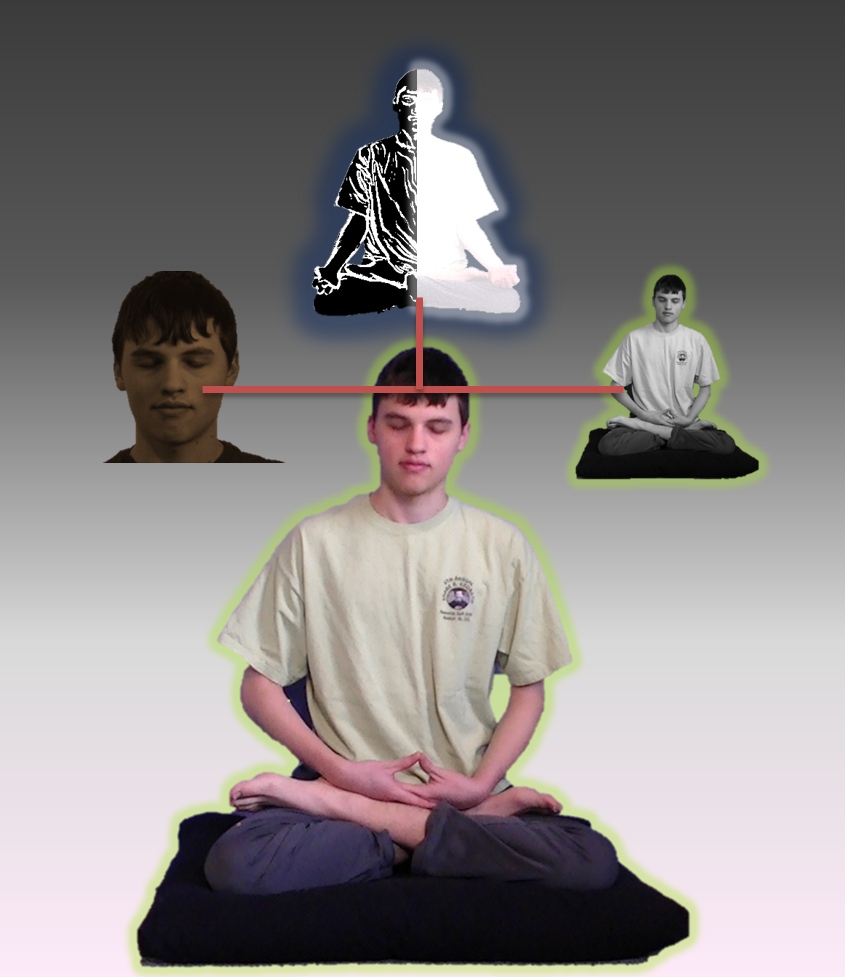
Tripod Focusing
For those who do not know, a tri-pod has three supports that create greater stability than one or two supports (of course). There are two tripod-like things that can aid in meditation-especially for beginners. They are a physical tripod and a mental tripod, what I call: Tripod Sitting and Tripod-Focusing. Today is going to focus on Tripod-Focusing.
One common way to meditate is to focus on the breath, or mantra, or something else. Interestingly, its the one and only thing someone is trying to focus on. By focusing on one thing, everything else melts away, and relaxation and inner peace sets in... at least until you lose focus. Although experienced meditators may be able to focus on one thing for a long time, new meditators might not be able to. They might focus on something for a little while, and their focus goes off and thinks about something else. Its not for a while before their focus returns to what they were originally focusing on.
This isn't surprising when you think about it. When you sit down in a chair, you notice the feeling between your body and the chair. This happens because the feeling is new, and your brain must wonder "huh, what is this?" Eventually, however, you begin not to notice it; that is, you no longer feel the feeling between your body and the chair. My guess as to why this happens is because the feeling is constant, so the brain gets bored, and doesn't notice it until you bring your focus back to it. It's a similar idea to the fact that the body feels acceleration (changes in velocity), not constant velocity.
So, focusing on one thing can get boring, and cause your thoughts to wander and distract you. How can one remedy this? Through what I call Tripod Focusing. When you focus on one thing, you have one "support." When you focus on a second thing, you have a second support, and a third one creates a third support, or tripod. When you shift your focus to different things, you brain will think "This is new!" and focus on that without wandering off. If you switch focusing before your brain gets bored, your mind should, in theory, never wander.
You can focus on:
- Your Breath touching your nostrils
- Your Breath filling your lower stomach
- Your Heartbeat
- Ambient Sounds
- If your eyes are closed, the blackness you see
- Ringing in your ears (if you can hear it)
- Parts of your body
- Mantra
- Visualization
- Etc.
How To Do It
What you do is you focus on one thing for as long as you can. Once you notice that your focus is slipping, your mind is getting bored, so switch over to something else, and focus on that for as long as you can. Rinse and Repeat throughout your meditation. In addition, you can focus on two things at the same time, or all three. Play around with it and see what works best for you. There might come a time during your sitting when you no longer need to apply tripod focusing; focusing on one thing comes easy. Congratulations! Just focus on what you want then.
Example:
One good example of tripod focusing is by using the Right Brain Meditation technique. For information, click the link. You can focus on your left side for awhile, then focus on your right hemisphere lighting up, then back to your left side, and occasionally your breath. You can also focus on two or three things at the same time.
Conclusion
So in conclusion, by switching your focus, your mind should not wander as badly as if you stayed focusing on one thing. By keeping a tripod-like focus, your focus is a lot more stable than focusing on one thing. By keeping your attention on your tripod, your mind will not wander and get distracted. Eventually, everything else will melt away, and you will feel peaceful. Tripod focusing has helped me, and I hope it can help you!
Happy Meditating!
-Seth
